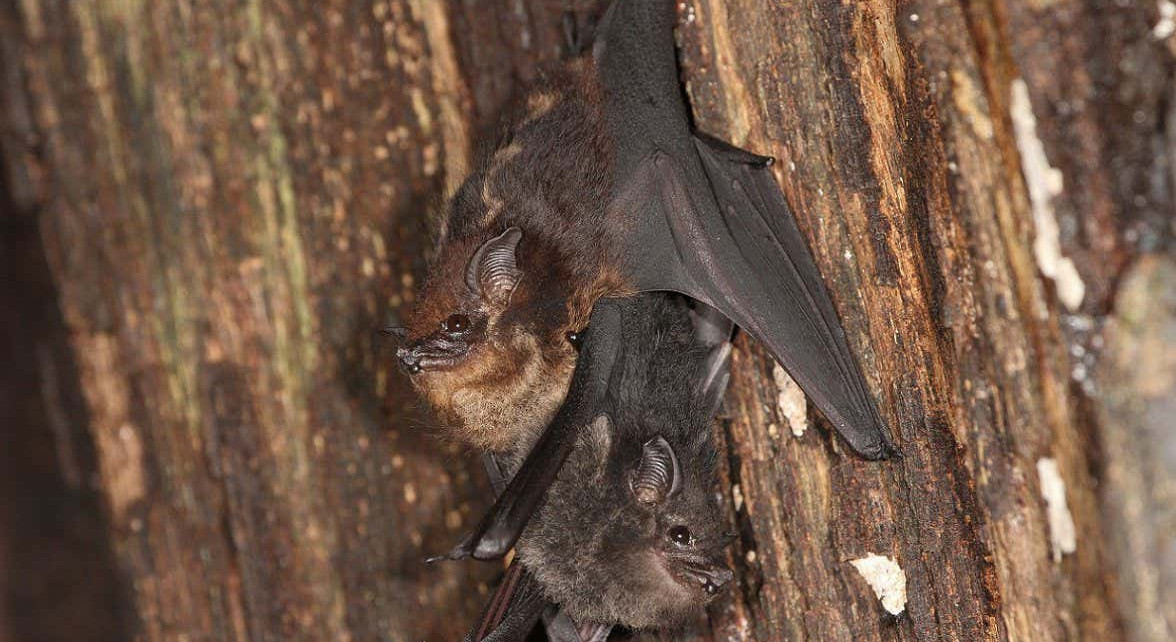[ad_1]
A greater sac-winged bat mother and her pup Michael Stifter
Young greater sac-winged bats babble just like human babies. A detailed analysis of the sounds has shown that it shares many similar features with the babbling of human babies.
The greater sac-winged bat (Saccopteryx bilineata) is known for its complex songs. “It has a very large vocal repetoire,” says Ahana Fernandez at the Museum of Natural History in Berlin.
Adult males sing to mark their territories before leaving their roosts in the evening and on returning in the morning. They also sing during daily courtship displays to females. During these displays, they hover in front of females and open sacs on their wings to release the scent of the urine and saliva inside – hence their name.
In 2006, team member Mirjam Knörnschild, also at the museum, noticed that young bat pups of the species babbled. “It seemed to her very like human babbling behaviour,” says Fernandez.
Now Fernandez, Knörnschild and colleagues have recorded and analysed hundreds of babbling bouts by bat pups, and shown that this resemblance is no coincidence. For instance, all bat pups start babbling at a young age, and the behaviour continues for a while and gradually becomes more sophisticated before ceasing. As with humans, the behaviour appears to be universal and not a result of culture.
In the case of bats, babbling starts around two weeks of age and continues for around seven weeks.
The babbling pups repeat the same sounds over and over again in a rhythmical pattern, says Fernandez. The babbling is not a form of communication with other bats, as the pups don’t respond to each other or adults. And over time, the babbling starts to include more of the sounds used by adults.
All this suggests that bat babble for the same reasons as human babies, to practice making sounds and gain motor control over their vocal apparatus. Female bats stop vocalising when they become adults. But the team speculate that babbling as pups helps them pick the best males that can produce the most difficult courtship songs.
Babbling behaviour has only been reported in a few mammals, but does also occur in some birds.
Journal reference: Science, DOI: 10.1126/science.abf9279
Sign up for Wild Wild Life, a free monthly newsletter celebrating the diversity and science of animals, plants and Earth’s other weird and wonderful inhabitants
More on these topics:
[ad_2]
Source link




